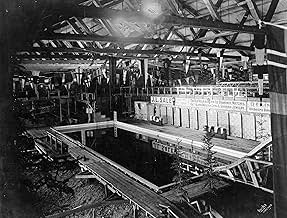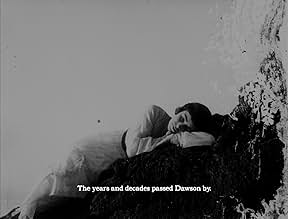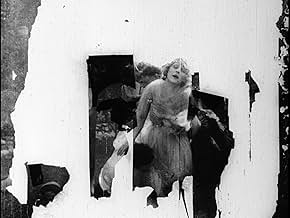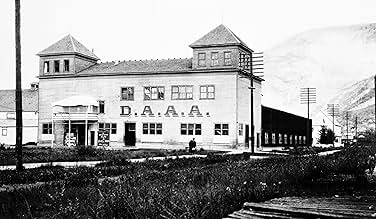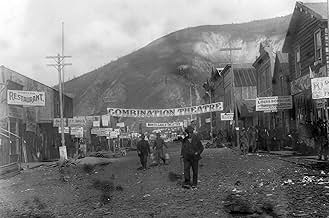IMDb RATING
7.5/10
2.3K
YOUR RATING
The history of Dawson City, the gold rush town that had a historical treasure of forgotten silent films buried in permafrost for decades until 1978.The history of Dawson City, the gold rush town that had a historical treasure of forgotten silent films buried in permafrost for decades until 1978.The history of Dawson City, the gold rush town that had a historical treasure of forgotten silent films buried in permafrost for decades until 1978.
- Awards
- 5 wins & 17 nominations total
Roscoe 'Fatty' Arbuckle
- Self
- (archive footage)
Frank Barrett
- Self
- (archive footage)
Alexander Berkman
- Self
- (archive footage)
Charles Chaplin
- Self as The Lone Prospector
- (archive footage)
Eddie Cicotte
- Self
- (archive footage)
Pat Duncan
- Self
- (archive footage)
Thomas A. Edison
- Self
- (archive footage)
Chick Gandil
- Self
- (archive footage)
Chief Isaac of the Tr'ondek Hwech'in Klondike Han
- Self
- (archive footage)
Larry Kopf
- Self
- (archive footage)
Kenesaw M. Landis
- Self
- (archive footage)
- (as Kenesaw Mountain Landis)
Auguste Lumière
- Self
- (archive footage)
Louis Lumière
- Self
- (archive footage)
Mary Miles Minter
- Self
- (archive footage)
Bill Morrison
- Self
- (archive footage)
- Director
- Writer
- All cast & crew
- Production, box office & more at IMDbPro
Featured reviews
...One thing really really went on my nerves : the subtitles. They are way too small, it's a real pain to read, especially when english isn't your primary language. Plus the excerpts are too short, sometimes like one second, then one second of another and another and another etc. You don't even have the time to understand what you are seeing and read the stupid tiny subtitles that you are flooded with tons of others 1 second excepts... So I would say to the artistic director of this movie : please find another job and don't ever work on another documentary again.
Frozen Time is a sophisticated documentary and an astonishing feat of film editing that combines still images and previously lost footage from the silent film era that was literally unearthed by archaeologists in Dawson City in 1978. Used as back-fill and buried for fifty years, over 500 reels of highly combustible nitrate film lay forgotten in an abandoned swimming pool, over which a hockey rink was constructed. Using clips from these restored films and newsreels, as well as early still images, Morrison retells the story of the 1890s Gold Rush and the history of Dawson City and its people within the context of world events (Klaus Ming December 2017).
This is a fascinating documentary that weaves together the story of the Klondike gold rush, the early history of silent cinema, the flammability of early celluloid film spools, and the mystery of the excavation of old reels in the site of a buried former swimming pool in Dawson City, Yukon Territory. Dawson was the end of the line for hundreds of silent films that crossed North America. Once they were shown in the local theater, they just piled up in warehouses in Dawson. Most canisters were thrown in the river or burned in fires, but some got buried and miraculously preserved in an oxygen-free environment and were able to restored. Bill Morrison, who spent years painstakingly putting this film together made some key choices: he showed pieces of over 100 long-lost films, mostly without narration but with captions identifying each film and its year, along with a haunting soundtrack by musicians from the Icelandic band, Sigur Rós. The clips from the 1919 "Black Sox" World Series were especially interesting to me.
I had the opportunity to see the film at the National Gallery of Art, and Mr. Morrison was there to answer questions. He mentioned that in the cache that was unearthed there were pieces of over 500 films, although no full-length feature films. (Who knew there were that many silent films in circulation?) He said he chose to eschew narration, because, after all, these were silent films. Someone in the audience asked him if he had heard of a similar cache more recently found in New Zealand. He said he had, and explained that New Zealand was similar in that it was a terminus point in the globe for such movies as well. Thanks to Mr Morrison, and a little luck, this history has not been lost forever.
I had the opportunity to see the film at the National Gallery of Art, and Mr. Morrison was there to answer questions. He mentioned that in the cache that was unearthed there were pieces of over 500 films, although no full-length feature films. (Who knew there were that many silent films in circulation?) He said he chose to eschew narration, because, after all, these were silent films. Someone in the audience asked him if he had heard of a similar cache more recently found in New Zealand. He said he had, and explained that New Zealand was similar in that it was a terminus point in the globe for such movies as well. Thanks to Mr Morrison, and a little luck, this history has not been lost forever.
A documentary that tries to do just a little too much. The story itself is fascinating - the discovery in 1978 of a trove of lost silent films preserved in the permafrost of Dawson City, Canada. To me, the 'star of the show' in the documentary needs to be the films, and I would have liked the focus to be there, after an introductory explanation of context. Instead, director Bill Morrison rewinds us all the way back through the history of Dawson, from its founding, the Yukon gold rush, and the subsequent changes to the town over the years. He also takes us through various news stories and social movements from the 1910's and 1920's, as they relate to footage that was discovered.
I like history and some of this was interesting to me, and at its best he matches photos to footage (for example, a socialist agitator being deported back to Russia). At its worst he gets into minutiae of Dawson's history, and instead of just showing some number of the silent films fragments themselves with explanation of the actors, attempts to match footage to what people in the present are talking about. For example, one of the discoverers of the trove says he had to call someone up to come have a look at it, so as he's describing that, we see footage of someone on the phone in an old movie. The background music is awfully eerie and odd in places too. It was interesting enough to watch and a lot of research and care went into the production, so depending on your interests, you may like it better.
I like history and some of this was interesting to me, and at its best he matches photos to footage (for example, a socialist agitator being deported back to Russia). At its worst he gets into minutiae of Dawson's history, and instead of just showing some number of the silent films fragments themselves with explanation of the actors, attempts to match footage to what people in the present are talking about. For example, one of the discoverers of the trove says he had to call someone up to come have a look at it, so as he's describing that, we see footage of someone on the phone in an old movie. The background music is awfully eerie and odd in places too. It was interesting enough to watch and a lot of research and care went into the production, so depending on your interests, you may like it better.
If you like this sort of thing...
Photographs and snippets of film from the late 1890s lead to a wonderful series of films of very tough/hard people who encountered their own Bitcoin bubble in the shape of the Klondike gold rush.
And there are some very interesting names in the history of this little gold rush town.
It's a matter of taste but I am fascinated by films of long dead people who once thought they were at the forefront of civilization. Old time photos are good for imaginings, but films of people going about their business causes a lot more 'connectedness' between the viewer and the subjects.
"I know someone who acts just like that!"
We are presented with photos and film footage that makes one think "Deadwood" probably wasn't really such an exaggeration.
Did you know
- TriviaThe film contains rare footage of the 1919 World Series - known for the Black Sox betting scandal.
- ConnectionsFeatures Le débarquement du congrès de photographie à Lyon (1895)
- SoundtracksFlutter
(uncredited)
Written and Produced by Alex Somers
Performed by Alex Somers,Birgir Jón Birgisson , Edda Rún Ólafsdóttir, Hildur Ársælsdóttir, María Huld Markan Sigfúsdóttir, Samuli Kosminen and Sólrún Sumarliðadóttir
Mastered by Taylor Deupree
Krunk
- How long is Dawson City: Frozen Time?Powered by Alexa
Details
Box office
- Gross US & Canada
- $132,369
- Gross worldwide
- $132,369
- Runtime
- 2h(120 min)
- Color
- Aspect ratio
- 1.33 : 1
Contribute to this page
Suggest an edit or add missing content



